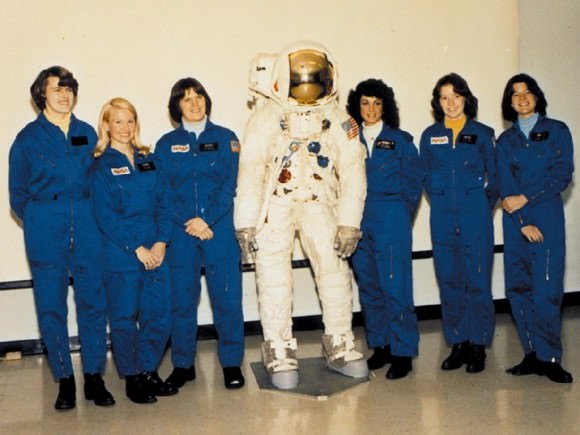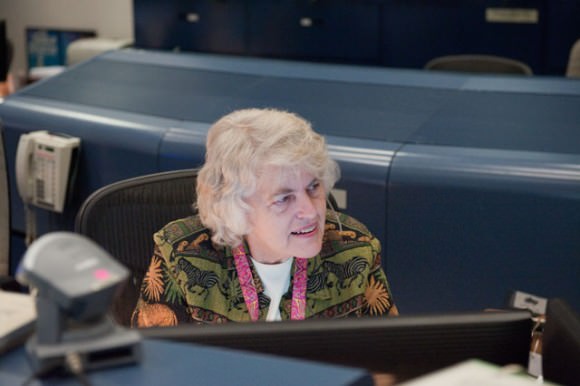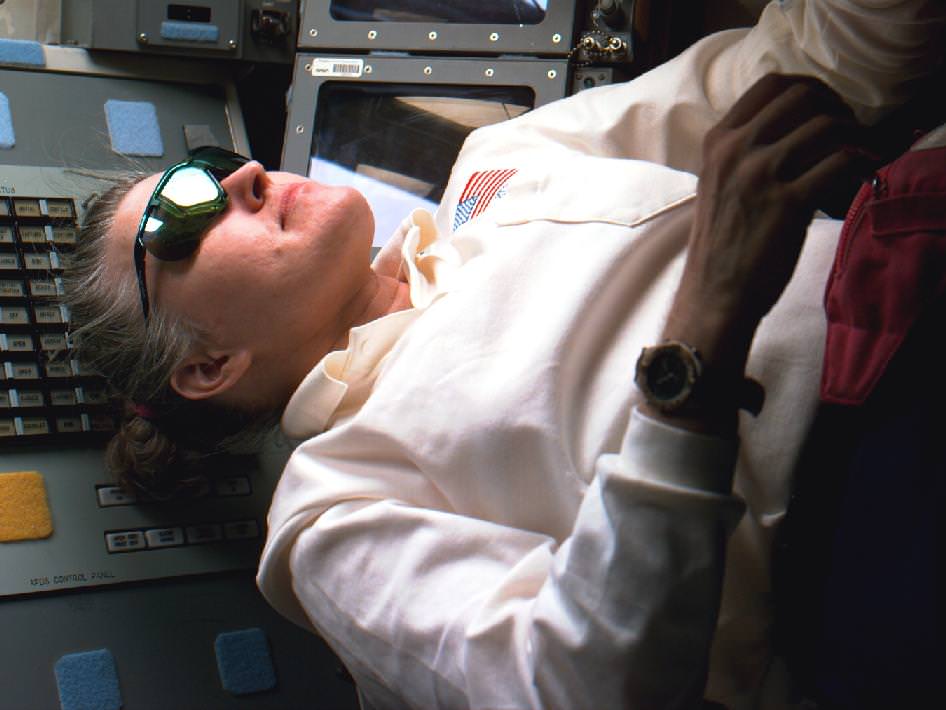[/caption]
It’s the end of an era for NASA and for those who have looked up to this iconic astronaut as a role model. After working as an astronaut for more the three decades, Shannon Lucid has retired from NASA. Lucid’s career at NASA was legendary, as she was a member of the US’s first astronaut class to include women. She was a veteran of five spaceflights, logging more than 223 days in space. Lucid is the only American woman to serve aboard the Russian Mir space station. She lived and worked there for more than 188 days, the longest stay of any American on that vehicle. Her time on Mir also set the single flight endurance record by a woman until Suni Williams broke it in 2006.
“I was extremely fortunate that I was able to be part of the shuttle Mir program,” Lucid said during an interview for NASA’s 50th anniversary celebration. “I wanted to do that, because it was something new, it was really — I was very, very fortunate that I was able to be in a program at the very beginning where everybody was working to get the program to work. “ Lucid said she was so happy and fortunate to have that opportunity and she found out “that I really and truly enjoyed living and working in space for an extended period of time.”

“Shannon is an extraordinary woman and scientist. She paved the way for so many of us,” said Peggy Whitson, chief of NASA’s Astronaut Office at the Johnson Space Center in Houston. “She was a model astronaut for long-duration missions, and whether she was flying hundreds of miles up in space or serving as Capcom [capsule communicator] during the overnight hours for our space shuttle and space station crews, she always brought a smile to our faces. Like so many others, I always will look up to her.”
Lucid, who holds a doctorate in biochemistry, was selected by NASA in 1978. She joined five other women as the agency’s first female astronauts. Her first three shuttle missions deployed satellites. STS-51G in 1985 deployed and retrieved the SPARTAN satellite; STS-34 in 1989 deployed the Galileo spacecraft to explore Jupiter; and STS-43 in 1991 deployed the fifth Tracking and Data Relay Satellite (TDRS-E). Her fourth shuttle mission, STS-58 in 1993, focused on medical experiments and engineering tests.
Lucid traveled aboard Atlantis on STS-76 in March 1996 to the Russian Mir space station. She performed numerous life science and physical science experiments during the course of her stay. She returned from the station aboard Atlantis on STS-79 in September 1996.
In 2002, Lucid served as NASA’s chief scientist at the agency’s headquarters in Washington. She returned to Johnson in the fall of 2003 and resumed technical assignments in the Astronaut Office.
Later, she served as a Capcom in the Mission Control Center for numerous space shuttle and space station crews, representing the flight crew office and providing a friendly voice for dozens of friends and colleagues in space.


